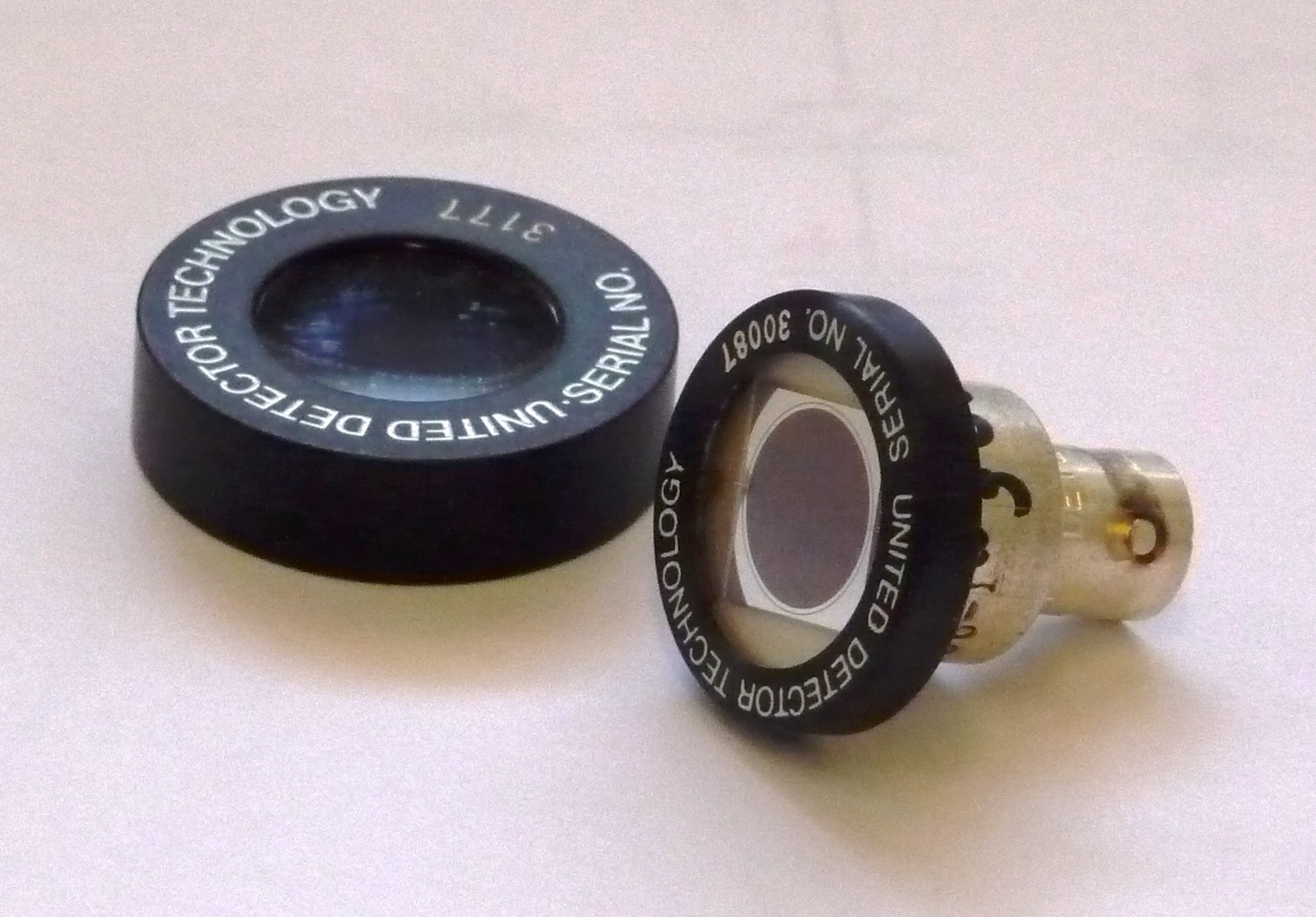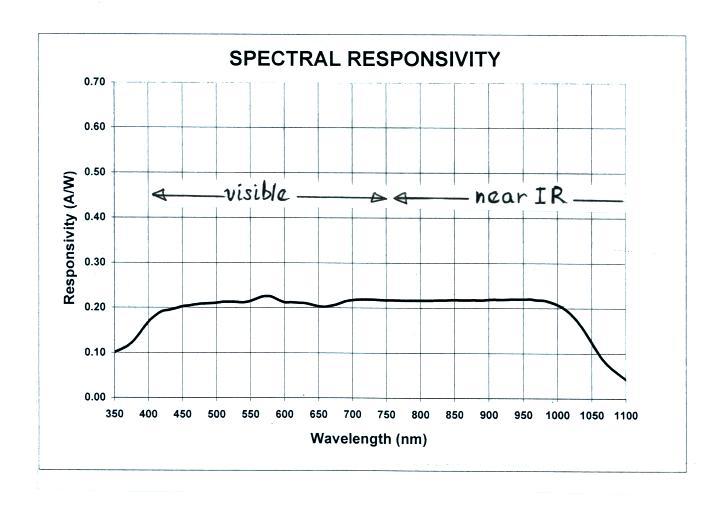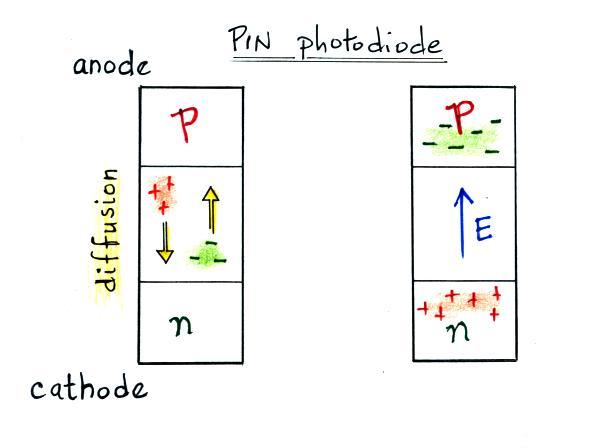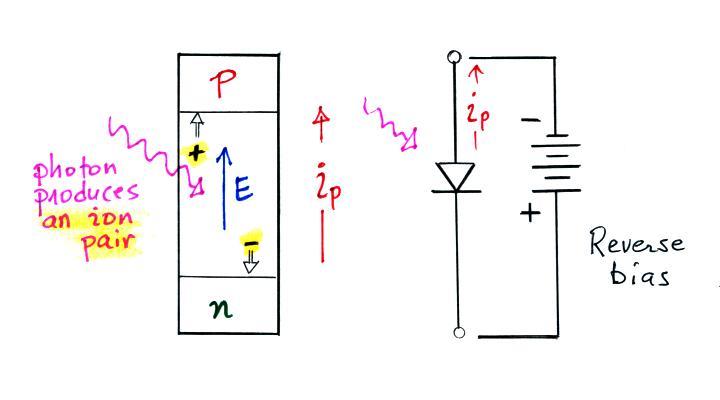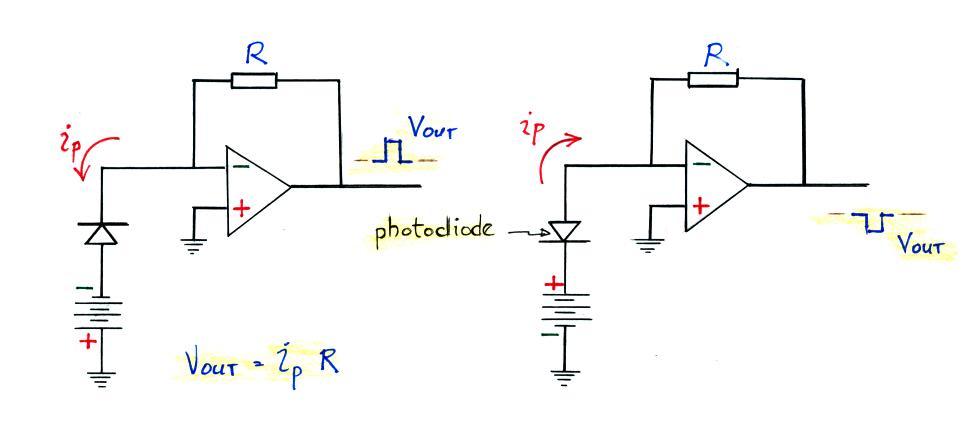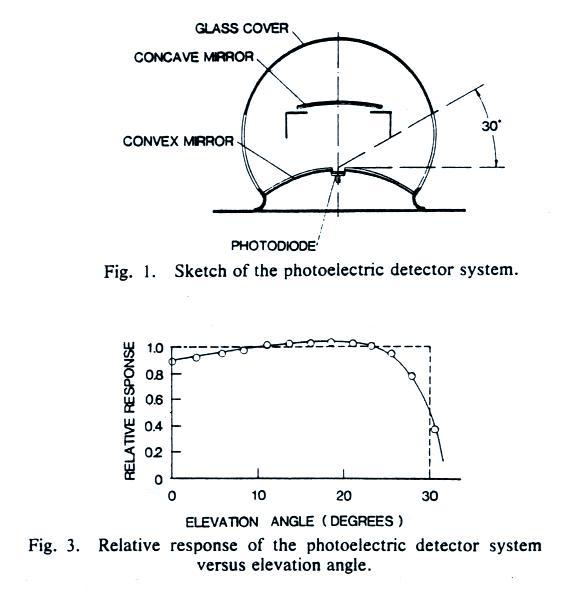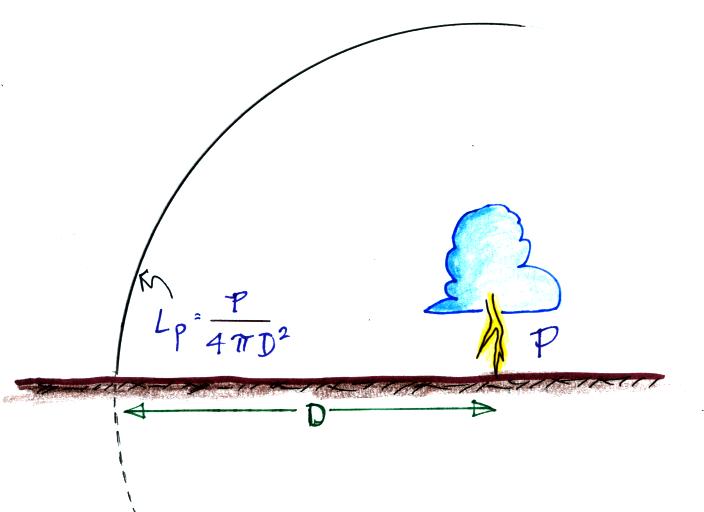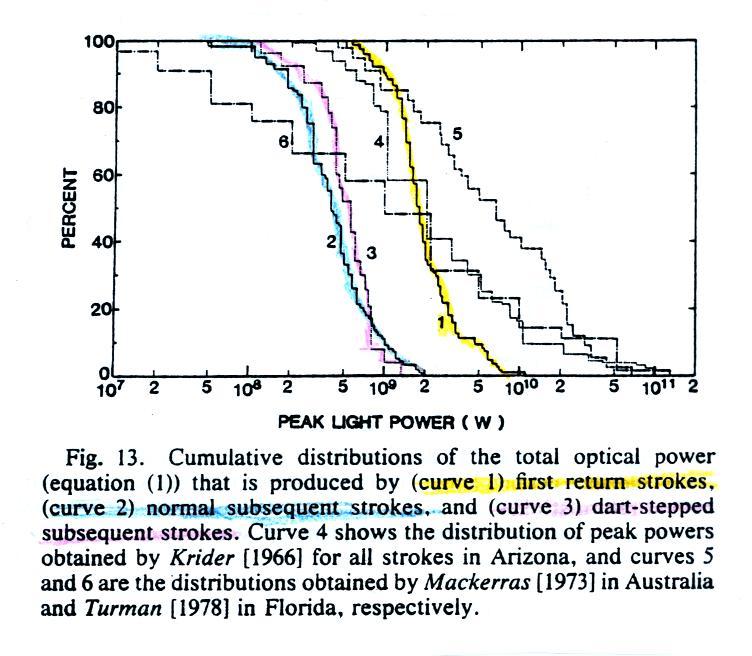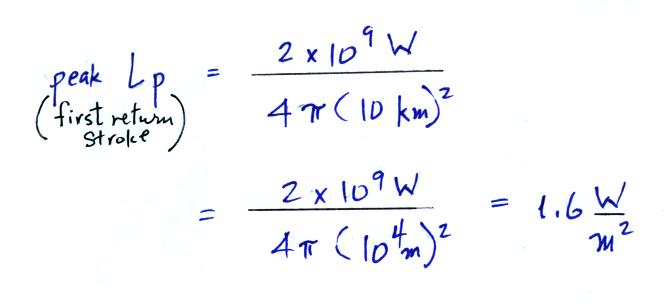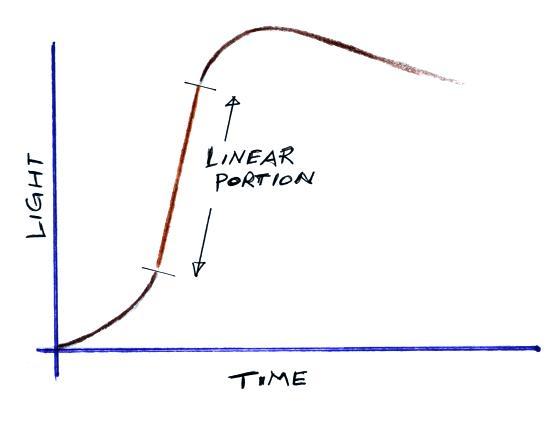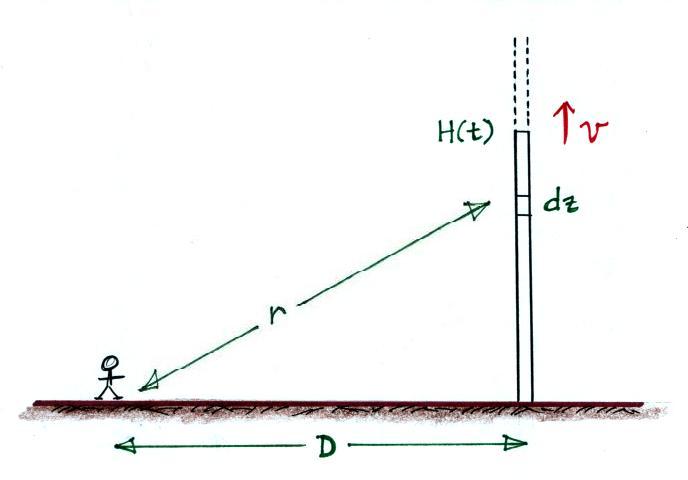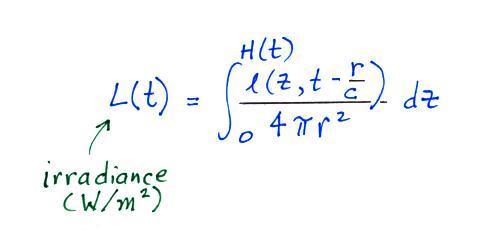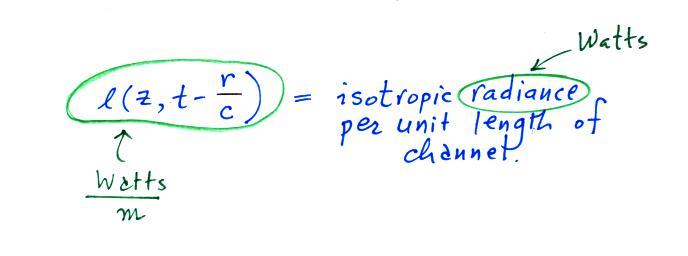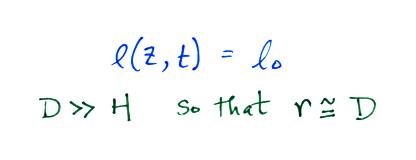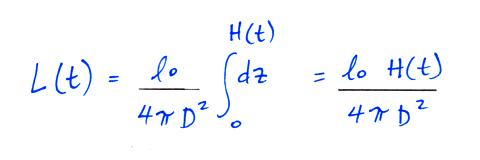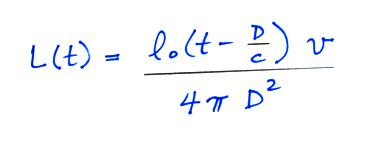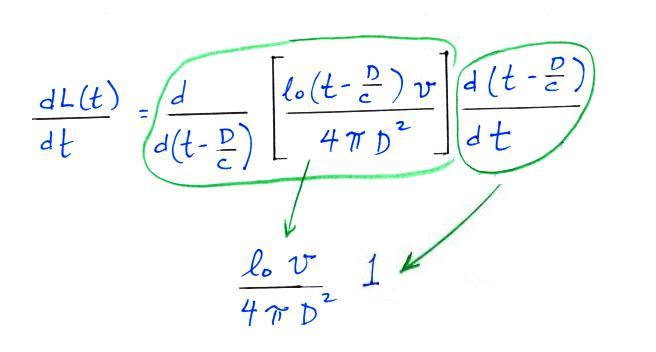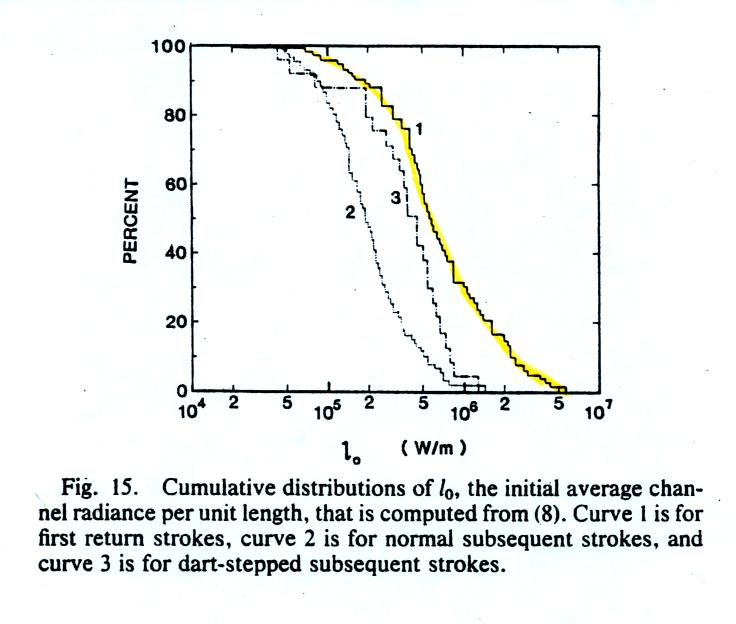In this lecture we'll look at ground-based measurements of the
optical emissions produced by
lightning.
Lightning is a pretty bright light source and a simple
photodiode can, in most cases, be used to detect lightning optical
signals.
A typical silicon photodiode (at right, a PIN 10 DF diode
manufactured by
United Detector Technology). This particular photodiode has an
active (sensing) area of 1.0 cm2.
It
can
also
be fitted
with
a
blue
filter
(shown at left in the photograph above) which
results
in fairly flat wavelength response across the
visible and part of the near IR portions of the spectrum (a
representative spectral response curve is shown below).
Photodiodes like this are often operated in the
photoconductive mode (the diode produces a current that is proportional
to
the intensity of the incident light signal) and are back biased.
This provides fast time response. This is explained further in
the
next few figures.
A PIN photodiode (and this is my very incomplete understanding of
them) consists of a "p-doped" region, a middle intrinsic (undoped)
region,
and an "n-doped" region. The term "doping" means impurities have
been added to a semiconductor material such as silicon. An
n-doping material (such as phosphorus) effectively adds negative
polarity charge carriers, the p-doping material (boron or aluminum)
positive charge carriers. Charge diffuses from the doped regions
across the intrinsic region in the middle. Movement of the charge
carriers creates an electric field which, once it grows to sufficient
strength, limits further diffusion and further charge buildup.
Photons which strike the intrinsic region of the photodiode
produce photo ions which then move under the influence of the E
field. Back biasing the photodiode increases the
size of the intrinsic region and accelerates movement of the photo ions.
We'll do a quick calculation to estimate a typical lightning photo
current, ip.
We'll
assume
a
sensing
area
of
1.0 cm2,
a
responsivity
of
0.2
A/W and an incident irradiance of 1.6 W/m2
(more about this value later in the lecture notes).
A current this small is readily converted to a
measureable voltage using one of the basic op-amp (operational
amplifier)
circuits below.
The two circuits are identical except for the
orientation of the photodiode and the polarity of the biasing
voltage. The orientation in the top figure
gives a positive-going output signal. The bottom circuit produces
a negative polarity output. A feedback resistance of 50
kΩ and a photo current of 32 μA would produce an output voltage of 1.6
volts.
Now we'll look at some actual data. Most of the results will come
from "The
Optical
and
Radiation
Field
Signatures
Produced
by
Lightning
Return
Strokes,"
C.
Guo
and
E.P.
Krider,
J.
Geophys.
Res.,
87,
8913-8922, 1982)
which
used
a
fairly
straightforward sensor design.
In this case a silicon photodiode was used together with a few
optical components to produce a system with 360 degree azimuthal
response and fairly flat angular response between 0 and about 25
degrees elevation angle. This field of view would be sufficient
to see the entire lightning channel between the ground and cloud base
unless the lightning was close to the observing location.
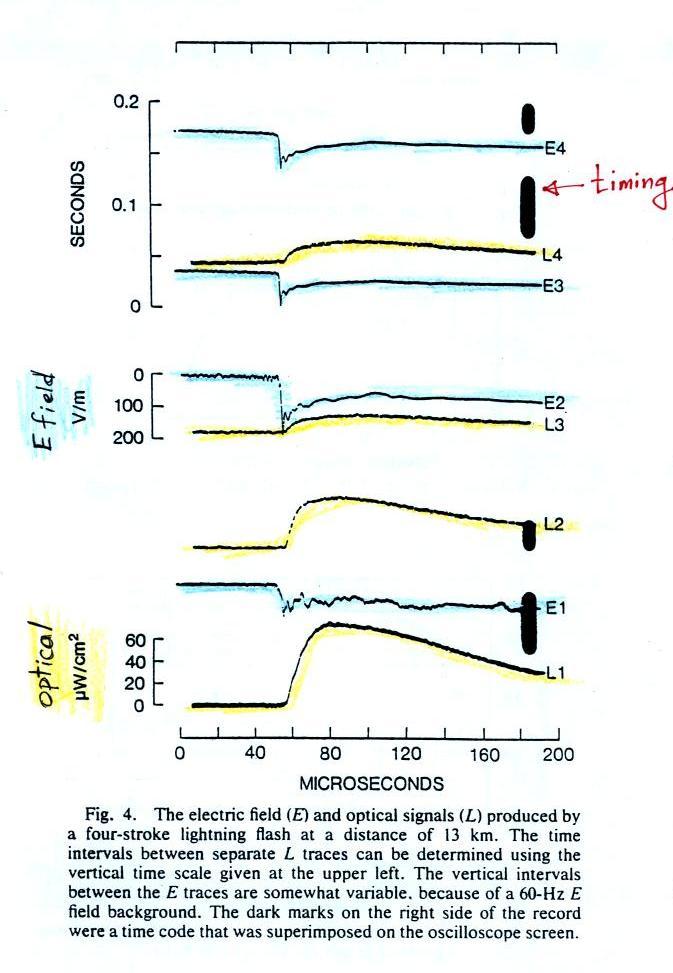
Examples of recorded fast electric fields (E, shaded blue) and
associated optical signals (O, highlighted in yellow). This was a
four stroke cloud-to-ground discharge that occurred at 13 km
range. The first return stroke is shown at the bottom of the
figure. The first 50 μs or so of the record is the stepped
leader. This is followed by an abrupt rise to peak. Notice
that the E field signal is still increasing in ampltitude at the end of
the record. This indicates some of the electrostatic field
component is present
which is typical of a return stroke field recorded at a range of about
10 km. These waveforms were
photographed on moving film.
The dark black timing marks were from an LED that would flash on and
off to code the absolute time onto the film.
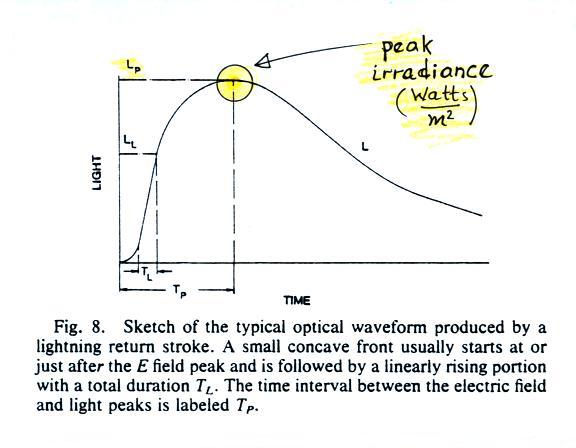
A typical return stroke optical signal. We can use a measurement
of the
peak optical signal amplitude (in volts) to determine the peak
irradiance, Lp (in W/m2). Then if the range to the
discharge is known we can estimate the peak optical power output, P (in
Watts) from the return stroke.
We treat the lightning discharge as
a point source and assume the optical power output during the strike
will expand evenly outward in a sphere. We measure the peak
irradiance, Lp,
a
distance D from the source (W/m2 on the surface of the
expanding sphere). So to estimate P we
simply multiply the measured values of Lp by the area of the
sphere.
Here's a cumulative distribution of peak optical power
estimates. 50% of 1st return strokes have a peak optical power
output of about 2 x 109 Watts or
more. Peak power emitted by
subsequent strokes is almost a factor of 10 less.
Peak irradiance from a return stroke at 10 km range would be about
You may remember this is the value used to compute an expected
photodiode output current.
Next we will
consider the linear portion of the rising front on a lightning optical
waveform.
We will assume that this is produced by the geometric growth of
the return stroke channel as it propagates from the ground up toward
the bottom of the cloud (the signal amplitude grows as the channel gets
taller). We'll also assume the channel is straight and vertical
and that the return stroke velocity is constant.
Optical emissions from the length of the channel between
the
ground and H(t) determine the amplitude of the signal observed at
distance D at time t.
The equation is pretty general at this point, we allow l(z,t) to
vary with z and t.
We'll make a couple of simplifying assumptions
Then the integral becomes
we'll replace H(t) with a time multiplied by velocity term
Here you can clearly see that L(t), measured at distance D would
increase linearly with time.
Next we differentiate this expression
dL(t)/dt is just the slope of the linear portion of the optical
signal waveform. We assume the distance to the discharge is known
and assume a value for the return stroke velocity. This provides
us with an estimate of the mean radiance per unit length for a return
stroke discharge.
Actual measurements of mean radiance per unit length. A
return stroke velocity of 8 x 107 m/s was assumed. Discharges
were 5 to 35 km from the measuring site.
